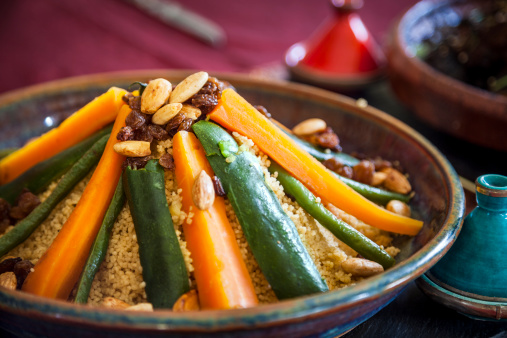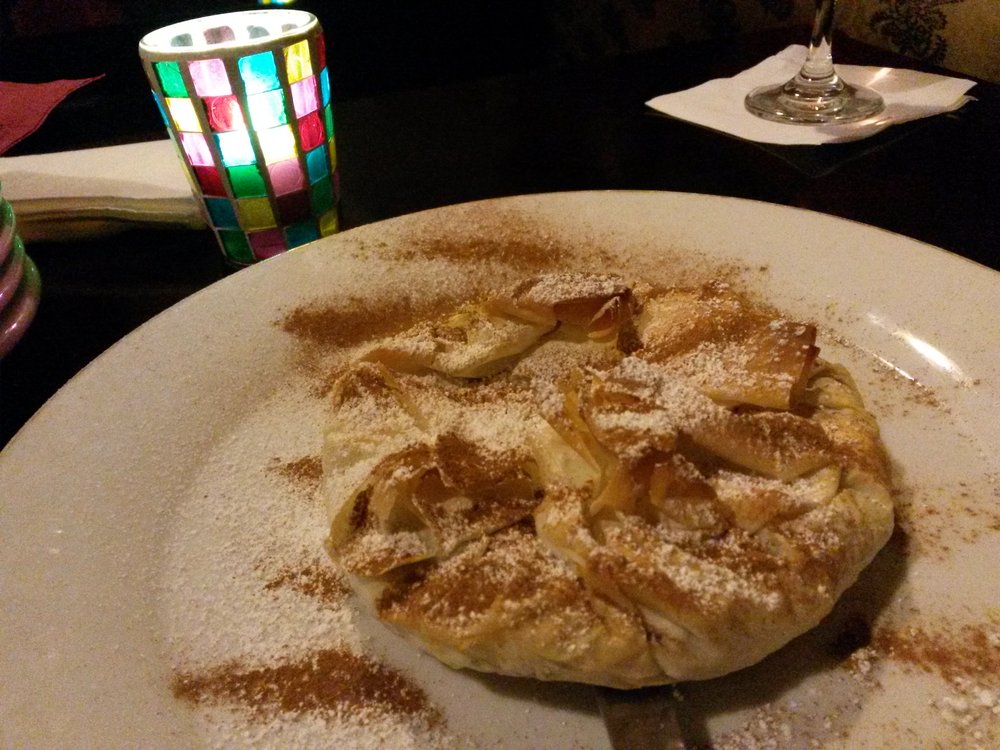Moroccan cuisine is a very diverse cuisine with many influences. The reason being the interaction of Morocco with the outside world for centuries. The cuisine of Morocco is a mix of Arab, Berber, Moorish, Middle Eastern, Mediterranean, African and French influences. The cooks in the royal kitchens of Fez, Meknes, Marrakech, Rabat and Tetouan refined Moroccan cuisine over the centuries and created the basis for what is known as Moroccan cuisine today.
Moroccan food always tastes better when eaten Moroccan style: using your three fingers (Thumb, Index and Middle) to dip or scoop with bread. The soft crusted Moroccan bread is highly absorbent and acts as a “fork” for conveying food when eating with one’s hand. At Marrakech restaurant, we make our bread with the simplest ingredients: flour, salt, sugar and yeast. We bake your bread daily and serve it fresh with our dinners.
.
Only a handful of spices, herbs and aromatics are necessary to make mouth-watering Tagines. But the variety of spices used in Moroccan cuisine is actually quite extensive. The spices you'll encounter most frequently in our recipes are used extensively in Moroccan cuisine. Common spices include Karfa (cinnamon), Kamoun (cumin), Skingbir (ground ginger), Libzar (pepper), Chawniya (paprika), Anis seed, Sesame seed, Kazbour (cilantro), Maadnous (parsley), Zaafrane (saffron), Touma (garlic), Basla (onions), Hamed mrakkad (preserved lemons), Zitoun (olives) Zit Lbaldiya (olive oil), Barkouk (dried prunes), Zbib (rasins) and Likama (mint).
Moroccans use both Orange blossom water and Rose water in cakes, confections, fruit salads, deserts and also to perfum themselves for good luck or to simply leavea flowery scent on thier hands after dining.






